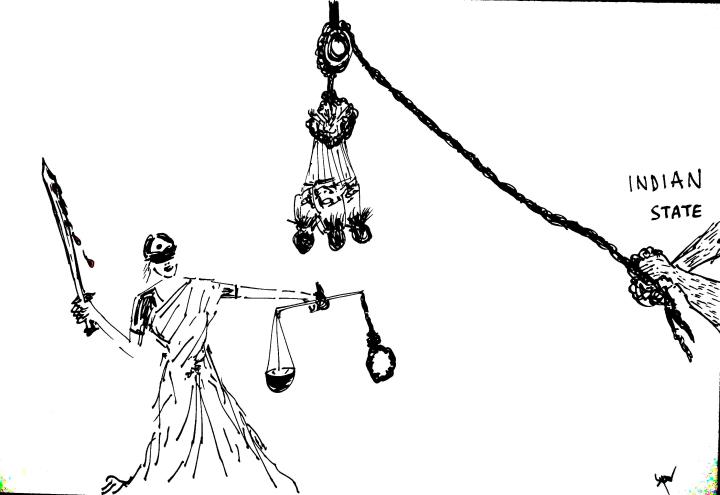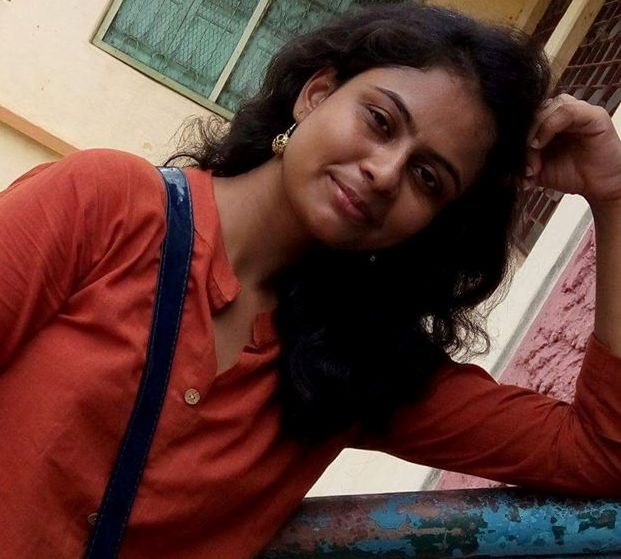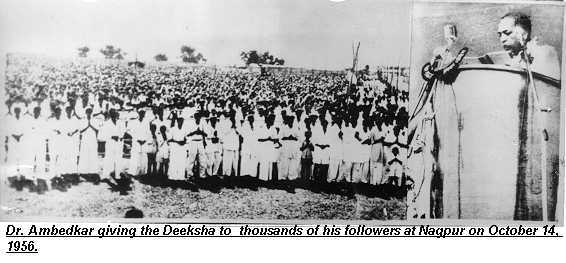Khakhlari

How digital activism narratives around the athlete exposed structural racism towards the ‘chinky northeasterner’
When Mirabai made news as the first woman to score a medal at the Tokyo Olympics, people across several socio-political factions were quick to claim her. Her win evoked nationalistic pride and sentiments and celebratory posts poured in. A congratulatory cartoon depicting her as the Mirabai of the Bhakti movement, replete with distinctive markers of an ‘Indian’ woman, bindi, bangles, saree, etc.. was widely shared by famous names.The only indication of it representing the weightlifting champion was the ektara being replaced with the barbells.There were others veering towards Hindutva and Brahmin supremacy as well who shared photos of her praying to several ‘Hindu’ gods and praised her as a ‘proud Hindu girl showing off her religion and achieving great feats’.
After a prominent Bahujan activist and influencer shared a screenshot of Mirabai being in the constitutional category of OBCs and thus, a Bahujan, several handles and accounts on Twitter and Facebook and later YouTube made similar claims. However, this screenshot which also had the term ‘Meitei Brahmins’ in it combined with her photos of praying to ‘Hindu’ gods sent some of the Bahujan activists into a frenzy and a flurry of articles seemingly availed at the quick tip of the fingers on Google search were shared.
Was Mirabai a Bahujan, Brahmin, Kshatriya or even a Sanghi, the last being the latest pet term at the moment in Indian politics?
While the first two instances of appropriation were convenient in the erasure of ‘Saikhom’ and ‘Chanu’ in her name and of her Meitei and Manipur roots, the third kind, that of the Bahujans’, were suggestive of prejudices towards the ‘chinky northeasterner’ while contradictorily recognizing her Meitei roots at the same time.
‘Mainlandsplaining’ and Subtle Racism
The various narratives around Chanu’s win expose a plethora of various kinds of racism a northeasterner with mongoloid phenotypes faces along with a profound ignorance yet paternalistic notions about what lies beyond the chicken’s neck. Gilbert Gee et al. use the metaphor of an iceberg to describe how racism operates. The tip of the iceberg is represented by ‘hate crimes and other overt acts of racial bias’ which can be ‘easily seen and individually mediated’. Such ‘overt actions are far less prevalent’ than what lies below the surface which are ‘implicit attitudes’ that are ‘more subtle, symbolic, and mundane types of discrimination, such as being treated with less respect. Although less dramatic, these mundane actions may be as damaging as the more overt ones.’
When a few anonymous and non-anonymous handles from the region resisted what they considered yet another imposition of an identity from the so-called mainlanders on them, they were instead schooled by the Bahujan digital activists. Perhaps they were opposing this only because they ‘did not speak Hindi’, ‘did not know they were Bahujans’ or perhaps they were ‘savarnas ‘ and not ‘tribal’ ? Were they hand in glove with the Brahmins and savarnas to serve their interests and are thus against the Bahujan movement itself?
Structural racism that lurks below the waters in the iceberg metaphor used in this case would even stand true in the case of seemingly well-meaning Bahujan activists when they make assumptions of anyone with mongoloid phenotypes particularly belonging to the frontier region as backward and in need of saving and thus a Bahujan they can align politically with. Although the screenshot mentioned had Meitei in the OBC category, there also exist Meiteis which are placed in General and SC categories.The groups were made after consideration of not ‘caste’ but income-groups of the families and the region of domicile.
The problem perhaps also inherently lies in not viewing the indigenous society as an independent identity separate from the caste system but also looking down upon them in the same way as Brahmins or savarnas do for anyone who is not them. To consider peoples of the NE as lacking agency and ‘if not Bahujan, then foot-soldiers of Brahmins and savarnas’ is symptomatic of how northeasterners are conceptualised as a group who are not able to pick their own battles but in need of supervision of Brahmins and savarnas and thus, inferior to them.
Racialised derogatory remarks and ‘Mongoloid’ anxieties on social media
With Mirabai and consequently the Meiteis being introduced as OBC/Bahujan to align with politically, it has only backfired with other terms like Meitei Brahmin, Meitei Kshatriya, etc. also being thrown in the conundrum. While some Bahujans supported the Meiteis and called them ‘a tribal group struggling for ST status‘, others seem to have found a fresh new enemy in the Meiteis. The latter group of Bahujans have also (mis)directed their anger at Meiteis and others from the NE who resisted this term.

On an Instagram post shared by Decolonial Indigenous Memes asserting their identities as being different from the ‘mainland-centred lens’ of ‘Dalit- Bahujan’ and ‘understanding of the power struggle and issues’ with their own ‘historical processes and experiences with the Indian State‘, such Bahujan activists did not shy away from using racialised and derogatory terms like ‘Mongoloid migrants’, ‘Chinese communists’ and accusing them of ‘anti-India/pro-China propaganda’. This rhetoric is not entirely new and is reminiscent of Sardar Patel, then Home Minister and his letter to Nehru where he wrote,
“Our north-eastern approaches consist of Nepal, Bhutan, Sikkim, Darjeeling and the tribal areas in Assam . . . The people inhabiting these portions have no established loyalty or devotion to India. Even Darjeeling and Kalimpong areas are not free from pro-Mongoloid prejudices. During the last three years, we have not been able to make any appreciable approaches to the Nagas and other hill tribes in Assam.”
What/Where is the Northeast and who are the Northeasterners?
‘Northeast’ is hardly homogenous and it is worthwhile to note that even such a consolidation of ‘one northeast‘ is defined only vis-à-vis the centre and New Delhi. As Wouters & Subba say ,“the very term ‘Northeast depends on one’s vantage point. The designation only acquires meaning after the question “Northeast of what?” is posed. The answer, obviously, is “of Delhi and India’s ‘Mainland’.”
Mirabai after winning the medal also prompted conversation led by some influencers from the northeast and their sympathizers to talk about the racism faced by the former in the mainland. While this is an important conversation to have, it comes off as generalized and further adds to the reification of the northeast as a monolith.
The dominant narrative around discrimination faced by northeasterners has persistently been reductarian to include only clothes and fashion by northeastern women, their hypersexualization, slurs against them, food habits and exoticisation of the region.
More often than not, the seemingly progressive mainlanders also end up perpetuating even more stereotypes albeit positive, that set the standards for a northeasterner so high that one can only fail at representing the ‘model northeasterner’.The former fails to realize that the differences in cultures of India proper and northeast that they find exotic in terms of music choices, fashion, alignment with global subcultures is quite often a result of active renunciation of the Indian mainstream.
As McDuie-Ra puts it, “The rejection of mainstream film and television is not just aesthetic but bound up in questions of identity. Not just individual identity but shared identities”.
“I am an Indian”
Again, to assume that these rejections are representative of the entire northeast would be yet another generalization. In the recent years, we have witnessed several rap artists sing about exclusion, alienation and marginalization. One of the popular artists K4 Kekho from Arunachal Pradesh even raps in Hindi in his YouTube video ‘I am an Indian’ which has over 14 lakh views. How Hindi became the lingua franca of a frontier state in this region, sometimes at the cost of indigenous languages, is yet another story of concerted efforts by the centre to integrate the peoples. While some assert it is due to contact of Indian Army from the Hindi-belt from the 1962 Indo-China war with the locals who were used as porters. Linguists like Manjeet Baruah say how there are “actual conscious policies, for example in terms of scholarships, in terms of awards, in terms of introducing the subject at the level of schools and colleges.”
In 1977, the Indira Gandhi government also started setting up the first Vivekananda Vidyalaya to impart education in Hindi to the locals.
Not long ago, there was a demand made on Twitter for a ‘chapter on northeast’ in NCERT books by NE students in a bid to tackle racism and ignorance.This was in response to a Ludhiana-based YouTuber making a comment that ‘Arunachal is a part of China’ and insulting an MLA from the region as ‘looking like a non-Indian’. The students asserted that they were in fact Indian and wanted to be recognized as such.
History of assimilation and integration
The narrative of the Meiteis being a dominant group in Manipur and oppressive to other communities in the state also begs the question of the agency and identities of these oppressed groups. Who is in charge of articulations and expressions of inequalities present in this society and region? Are Bahujan digital activists of the mainland now their spokespersons, saviours and allies? In doing this, are they not in fact, replicating the same saviour complex that they frequently accuse savarnas of? In consolidating ethnic groups of the northeast in a Brahminical framework of Brahmin-Bahujan binary by adding the non-savarna, non- Brahmin under the ahistorical umbrella term of ‘Bahujan’ are they not viewing these communities through the same operational lenses of caste?
Is a Meitei Brahmin and a Brahmin from India proper, a Meitei Kshatriya and one from the mainland considered equal owing to their ‘castes’? If a Meitei Brahmin or Kshatriya exists, who are then the Meitei Vaishyas, Shudras and Dalits? By including religious rituals and practices of indigenous groups to be termed as ‘Brahmin’ and ‘Sanghi’, are these activists not reproducing the same notion of ‘Hinduism is a lifestyle’ and thus anything which is non-Islam or non- Christian as Hindu?
If one really wants to dismantle hierarchies propounded by Hinduism, should one not debrahminise and debunk it instead of reproducing it in dynamic ways?
This is even more ironic and unfortunate considering the Meiteis already have a long social and political battle in their revivalist Sanamahi movement. The burning of the Puya, the sacred scripture of Meiteis by Shantidas Gosai, the Hindu missionary who came to Manipur in the early 18th century which is a landmark event that changed the cultural landscape of the region.
The forced annexure of the princely kingdom of Manipur to the Indian union in 1949 by first tricking the Maharaja into integration talks and then holding him captive to sign the ‘Merger Agreement’ has also left a ‘residual bitterness’with the people (Haokip).It is important to note that the merger was neither opposed or supported by the various groups present and each group had their own concerns to do so. For example, the Kuki chiefs opposed it to “preserve their territorial integrity” while “due to its concerns about the prevailing international situation, especially the communist uprising in Burma, the Manipur Congress party supported the consolidation of India through integration and merger of native states, especially Manipur” (Haokip).
The elephant in the room is that, if the Meiteis were placed in such categories of General, OBC and SC, it is only because the princely kingdom was made a part of the Indian union.
Beyond caste-India and reimagining the ‘tribal’, the minority, the ‘northeastern’, etc.
As the Olympics progressed, Google search for the castes of the winners remained constant and although similar categorisation of athletes as Bahujan or Hindu/Sanghi based on castes and photos of them performing ‘Hindu’ rituals were circulated, none of them bore the brunt of it as much as Chanu did. Most of the athletes who were from the Northeast were also largely ignored in the mainstream later on.
In present post-colonial practice of including indigenous peoples in the neat deterministic constitutional category of Scheduled Tribe (ST) and in further efforts to politically mobilise them, we often see even terms like ‘tribal’, ‘ST’, ‘Adivasi’, ‘indigenous‘ used interchangeably. In NE India, the term ‘Adivasi’ is mostly meant to denote indentured workers and their descendants that were brought in to work on tea plantations by the British in the 19th century.
According to Dolly Kikon, “Although the term Adivasi literally means original inhabitants of the land in contemporary India, in Assam it has increasingly become an ethnic category”. This specific community of tribes and sub-tribes consist of Santhal, Munda, Oraon, Ho, etc. who are yet to achieve Scheduled Tribe status. The fact that, Adivasis are not included in the ST category also poses questions not only about indigeneity but also if indigenous are defined as such only by constitutional categories since they existed even before the nation-state did.
Whether it is the mythological period where ancient kingdoms of the NE were said to be ruled by Asuras and Danavas ie., non- Aryans, or colonial ethnographies and ethnohistories, we observe that the underlying prejudice remained that these indigenous groups are ‘backward’ or even ‘dangerous’. They were considered inferior either because of their race or through the notion of linear progression of the mainstream and in relation to it. This is not true just of India but of around the world where indigenous peoples find themselves at the receiving end of consequent interventions.
The purpose of the article is hardly to deny or claim casteism in Manipur or even in the NE. On the contrary, it is to recognize the need for new articulations of resistance against existing oppressions with sociocultural and geopolitical context that may or may not converge with the ideas of casteism, Hinduism, Brahminism, etc. in the mainland. Quite often, these would even be beyond the purview of caste especially in the diverse NE with ethnic fissures prevalent amongst various non-caste groups. Although the mainland imagination of NE is as one group, “there is not a single criterion, be it culture (however defined), language, religion, ecology, economy or agriculture, that unifies the region or applies to the region alone, except, perhaps, a sense of shared alienation from the Mainland”(Subba).
Cherry-picking on constitutional categories and ‘castes’ while ignoring the questions of racism, history, region, culture or even how inequalities prevalent in Hinduism manifest in the region in peculiar ways, while erasing entire identities to form ‘solidarities’ is a failed exercise. The ramifications of this might lead to breeding of even more contempt and further alienation of the NE. In this day and age of rapid information exchange and considerable democratization of social media spaces, digital activists and influencers should exercise due caution to not appropriate and misrepresent the very people they claim to fight for or want to build alliances with.
In an unequal nation like ours where every oppressed group is clamouring for rights, it is but invariable that there will be several forms of oppressions. One is not expected to know of every single community and their individualisms and concerns particularly in such a pluralistic nation; both India proper and the NE are as diverse as it can get.
Yet the basics of how we approach individuals, groups and peoples should ideally always start from mutual respect and recognition, in the absence of which there would be total chaos and catastrophes.
~
References
$ 1.Gilbert C. Gee, Annie Ro, Salma Shariff-Marco, and David Chae, Racial Discrimination and Health Among Asian Americans: Evidence, Assessment, and Directions for Future Research, DOI: 10.1093/epirev/mxp009
$ 2.Jelle J.P. Wouters & Tanka B. Subba (2013) The “Indian Face,” India’s Northeast, and “The Idea of India”,Asian Anthropology, 12:2, 126-140, DOI: 10.1080/1683478X.2013.849484
$ 3.Thongkholal Haokip (2012): Political Integration of Northeast India: A Historical Analysis, Strategic Analysis, 36:2, 304-314
$ 4.Duncan McDuie-Ra (2016) Adjacent identities in Northeast India, Asian Ethnicity, 17:3, 400-413, DOI: 10.1080/14631369.2015.1091654
$ 5. https://www.freepressjournal.in/india/speaking-hindi-now-a-way of-life-in-arunachal-pradesh
$ 6.Dolly Kikon:Jackfruit seeds from Jharkhand: Being adivasi in Assam Contributions to Indian Sociology 51, 3 (2017): 1–25 SAGE Publications DOI: 10.1177/0069966717720575
~~~
Khakhlari is currently pursuing M.A. Sociology. She is an indigenous woman from the Bodo Kachari tribe. Her interests include folk music and instruments, dance forms and painting. Twitter handle – @khakhlari4
~










